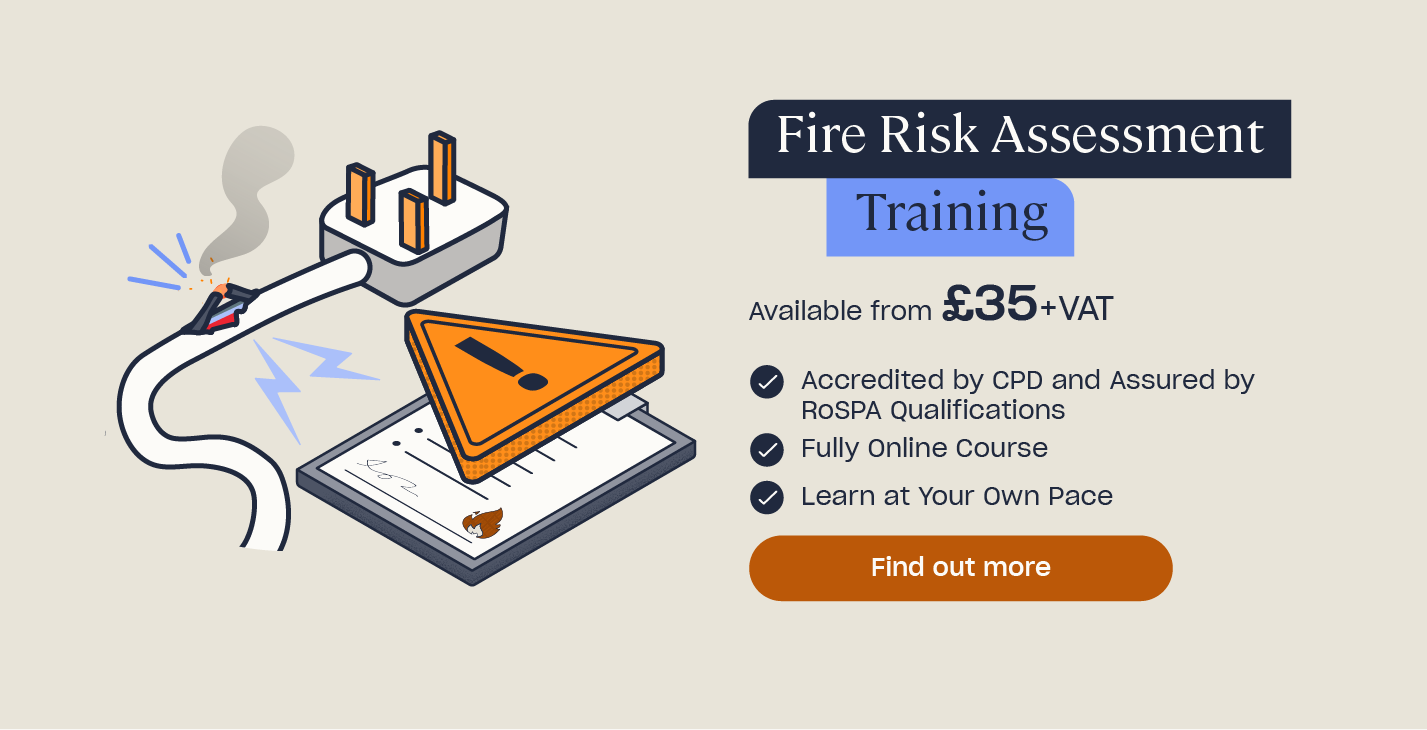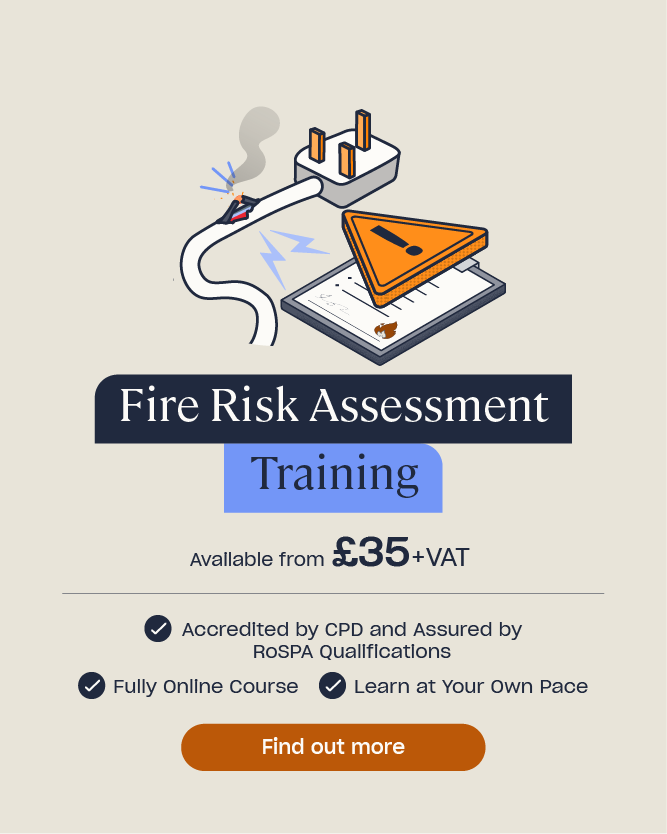Bonfire & Firework Safety: Assessing the Risks
Are you planning to host your own fireworks display?
Or the Perfect Bonfire Night Party?
If you’re going to be hosting a fireworks display or bonfire celebration, you must consider the health and safety risks to ensure everyone is kept safe. This applies to fireworks or bonfires for Bonfire Night, Diwali, New Year’s Eve and Chinese New Year, as well as celebrations such as a wedding or birthday, or for a larger event run by a business. You must know how to control and handle fireworks and bonfires in these situations as both can cause serious injuries to attendees if they aren’t managed properly and safely.
Use the contents below to jump to a certain section of this article.
- What are the Safety Rules for Fireworks and Bonfires?
- Follow the Firework Code
- How to Conduct a Bonfire or Fireworks Risk Assessment
- Bonfire Night Safety Tips
- Safety Gear and Equipment
- How to Dispose of Fireworks, Bonfires, and Sparklers
- Alternatives to Bonfire and Fireworks for Bonfire Night
What are the Safety Rules for Fireworks and Bonfires?
If you are going to be setting off fireworks or lighting a bonfire, it is crucial that you consider the risks involved and follow safety guidelines. Both fireworks and bonfires can be very dangerous if not properly controlled. An estimated 3,600 people were hospitalised with fireworks injuries over the Halloween and Bonfire months between 2015 and 2019 in the UK. Many more incidents required the emergency services to be called out, including the fire brigade. If you are going to be responsible for fireworks or a bonfire, it’s important that you fully understand how to do so safely.
If you are going to light a bonfire, you can find out more about the rules and regulations in our Burning Rubbish: What are the Rules and Regulations? article.
Follow the Firework Code
You should always follow these 10 simple steps when setting off fireworks. This will ensure the safety of the person lighting the fireworks, those watching the display and neighbours.
- Only purchase fireworks from a reputable shop. You should check whether they are conformity marked to meet essential health and safety requirements. Fireworks supplied in Great Britain (England, Scotland and Wales) must be marked with the UKCA marking (or CE marking prior to the deadline for UKCA implementation), or be accompanied by documentation that is marked with it. There are different requirements for conformity marking in Northern Ireland. Previously, fireworks needed to have BS 7114 written on the box to prove they conform to British Standards. However, from 2017 it has in fact been illegal for a fireworks retailer to sell such fireworks, as the classification has now been phased out.
- Plan your fireworks display. Make preparations in advance and plan where exactly you’ll be safely positioning the fireworks or bonfire. Angle fireworks well away from spectators and buildings. This way, if the fireworks fall over or don’t set off properly they won’t hit anything or anyone.
- Keep fireworks in a closed box. Take one out at a time, rather than emptying them all onto the floor and setting them up. This means the risk is lower if one were to accidentally set off. Before use, you should store the fireworks in the box they came in or in a metal box with a lid.
- Read and follow the manufacturers’ instructions carefully for each firework. Always make sure the fireworks are suitable for the area you’re setting them off in.
- Supervise properly. If holding a small event with children, make sure there are at least two adults present so that one is always there to supervise children while the other safely lights the fireworks. Children must always be kept away from fires and fireworks. If you’re hosting a larger event, you should consider how the crowd will need to be controlled and kept safe.
- Light the firework at arm’s length. Do so with a taper, e.g. a safety gas (clicker) lighter, and then immediately stand back. Warn people once fireworks have been lit.
- Never return to a firework once it has been lit. Even if it doesn’t look like it’s been lit properly or it has fallen over, it could still explode. Don’t risk it – you and others will be safer if you just leave it alone.
- Stand well back from fireworks, away from the direction it’s facing. Safe spectator distances are usually recommended on the fireworks. You should make sure your attendees keep their distance. Consider using tape or something similar as a barrier to prevent anyone from getting too close.
- Never use petrol or other dangerous liquids to light fires. This can be incredibly dangerous and cause you to quickly lose control of the fire, making it much harder to extinguish.
- Make sure that all flames and hot sources are extinguished at the end of the event. You must make the surroundings safe before you leave the area and it becomes unattended. This means ensuring that the bonfire is fully extinguished.
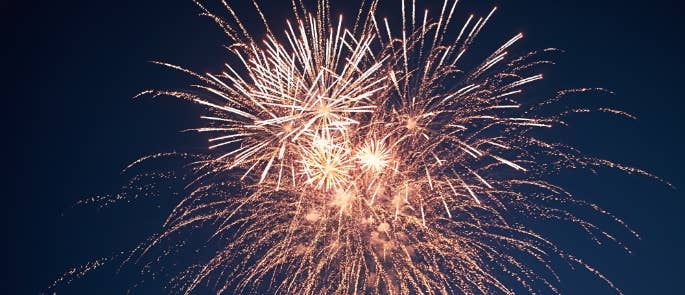
How to Conduct a Bonfire or Fireworks Risk Assessment
Remember that fireworks are explosives and must be handled correctly to ensure the safety of everyone nearby. Many accidents happened during the four weeks surrounding Bonfire Night and, on average, almost half of all firework injuries happen to children under the age of 16. Most of these injuries happen as a result of the unsafe handling of fireworks and a lack of safety precautions. By considering what control measures will be needed at your event and implementing them, you’ll keep yourself and your guests safe.
To help you to identify and control the hazards posed by hosting a fireworks display or bonfire, you should carry out a risk assessment in advance.
Step 1 – Identify the fire hazards, e.g.:
- Rogue or faulty fireworks.
- Mishandled sparklers.
- Bonfire flames and embers.
- Things nearby that could catch on fire and cause fire to spread, e.g. buildings, fences, trees, shrubbery, etc.
Step 2 – Identify the people at risk, e.g.:
- People lighting fireworks.
- People controlling a bonfire.
- People lighting and handling sparklers.
- People present, including children.
- Neighbours.
- Pets, who could be spooked by fireworks or fire.
Step 3 – Evaluate the risks and decide how to remove or reduce them.
You can achieve this by following the firework code and general safety tips that we have listed throughout this article.
Step 4 – Inform people of the preventative measures.
Make sure you tell people what precautions you have put in place and how it affects them. This should include explaining the fire safety measures that are in place to prevent accidents and ensuring that everyone understands what to do to follow them. Most importantly, make sure there is adult supervision for children at all times.
Step 5 – Review to make sure your preventative methods are working.
Observe whether anyone is still at risk. Your measures and instruction may not be sufficient if people are still able to put themselves in harm’s way. For example, standing too close to fireworks being set off or not wearing safety gear.
Back to Top
Bonfire Night Safety Tips
In addition to following the firework code, you should keep in mind the following general safety tips when hosting an event:
- Children should be supervised at all times. They may not fully grasp the consequences of failing to follow safety precautions, so they need constant adult guidance.
- It is illegal to carry fireworks in public if under the age of 18 years. They must also not be sold to anyone under this age.
- Where possible, only one person should be in charge of setting off fireworks. That way, fewer people are put at risk.
- Never drink alcohol if you are in charge of setting off fireworks or tending to a bonfire. Also, keep alcohol well away from fireworks and bonfires.
- Avoid attending fireworks or bonfire displays outdoors if you have heart problems, asthma, or bronchitis. You can still enjoy them from inside!
- Keep pets indoors. Ensure doors, windows, and curtains are closed to reduce the sounds of explosions, and have some background noise on to help distract them, e.g. the TV. Don’t try to coax them out of hiding; this may frighten them more.
- Inform your neighbours in advance that you will be setting off fireworks or having a bonfire.
- Do not set off fireworks during night hours (11pm to 7am). This excludes Bonfire Night (midnight) and Diwali, New Year’s Eve, and Chinese New Year (1am).
- Learn how to treat minor burns, just in case. If there is an accident, you need to ensure it is safe to approach first. Our article ‘How to Carry Out the Primary Survey Using the DRABC Steps’ explains how to carry out an initial assessment of someone who is injured or ill. Remember that you must always call the emergency services immediately if things are beyond your level of skill.
- You can find further information on keeping children safe during a fireworks display on the Child Accident Prevention Trust website.
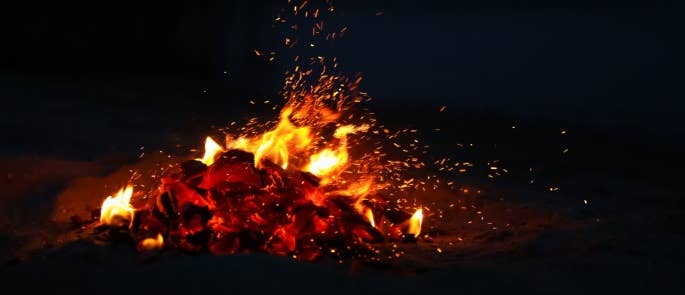
Safety Tips for Sparklers and Bonfires
Your display will likely consist of more than fireworks. If you’ve also got sparklers and a bonfire, you must consider how to manage the risks these pose. Follow these safety tips for ensuring people handle sparklers safely and that bonfires do not get out of control.
Sparklers
- Don’t hand sparklers to children under five. Sparklers can reach temperatures of 1600 °C and can be very dangerous.
- Anyone who handles sparklers should wear gloves. They should also wear a long-sleeved shirt or coat to cover bare skin.
- Sparklers should be held at arm’s length when being lit. Have one person hold the sparkler while another person lights it with a taper.
- Sparklers shouldn’t be waved around close to other people. Ensure anyone who is using one is a few feet away from other people.
- Do not hold a baby or child in your arms while also holding a sparkler. When using a sparkler, your attention should be solely focused on it.
- Extinguish sparklers in a bucket of cold water. Keep plenty of buckets nearby for people to extinguish their sparklers so they don’t have to walk far.
Bonfires
- Choose a clear, safe site. It should be away from fences, sheds, bushes, trees, roads (as smoke can pose a danger to traffic), anywhere children may be playing, and where fireworks are being lit.
- Check the bonfire for hiding pets or wild animals before lighting it. Small animals like hedgehogs or frogs may have made their way into the pile.
- Do not pour petrol or paraffin onto a fire. Instead, use firelighters which will prevent dangerous flare-ups.
- Do not burn domestic waste. This could cause pollution or harm people’s health.
- Keep buckets of water and/or a hose that is hooked up to a water source nearby. Chances are you won’t need them, but prevention is better than cure.
- Tie back long hair and avoid wearing loose clothing. You don’t want to have anything dangling from you that could easily catch on fire. Avoid wearing nylon clothing, which melts against the skin. Scarves should be tucked in.
- Ensure the fire is fully extinguished after the event is finished. A fire that may look like it will safely die out could very easily cause a new fire once left unattended.
- Do not throw discarded fireworks onto bonfires. They may still have some gunpowder left in them.
Safety Gear and Equipment
To ensure that all these activities are carried out safely, you should have the following to hand:
- A torch.
- Buckets of water (for extinguishing sparklers or for emergencies).
- Buckets of sand.
- A hose (hooked up to a water source).
- Eye protection.
- Gloves.
- A bucket of soft earth to put the fireworks in.
- Suitable supports and launchers, e.g. for Catherine wheels.
Furthermore, make sure to cover as many parts of your skin as possible, just in case.
Back to Top
How to Dispose of Fireworks, Bonfires, and Sparklers
After your fireworks or bonfire event, you must ensure that you dispose of any materials used correctly. Failure to do so could result in further risks. You should safely dispose of what you can on the day of the event. It can be difficult to gather all waste materials at night, and so someone must check the area first thing the following morning in daylight.
Fireworks
You should safely dispose of all fireworks after your display – including spent (those which have been used and weren’t misfired or partly ‘spent’), damaged, partly spent, misfired, and any that are unused. To do so, you should collect fully spent fireworks into a refuse bin. Any misfired, partly spent, or unused fireworks must be fully submerged in a bucket of water for several hours, or long enough to soak the firework the whole way through. Doing so will render the firework non-explosive.
Once this process is complete, Hereford & Worcester Fire and Rescue Service advise that you may be able to dispose of the fireworks by placing them inside a plastic bag and putting this in your domestic waste. However, you are advised to check the manufacturers’ instructions about disposal that come with the fireworks, or to contact them on the supplier for further information.
Bonfires
You should put out bonfires by pouring water on them, even if there aren’t any flames. This ensures that the fire has been extinguished completely and that the embers won’t reignite when the fire is left unattended. Once plenty of water has been poured on the bonfire and you are certain that it has been extinguished, you can leave it.
Sparklers
As mentioned, you must extinguish sparklers in a bucket of cold water immediately after use. This is because they will still be very hot and can cause burns if people come into contact with them. Once they have fully cooled, you can then dispose of sparklers in your general waste.
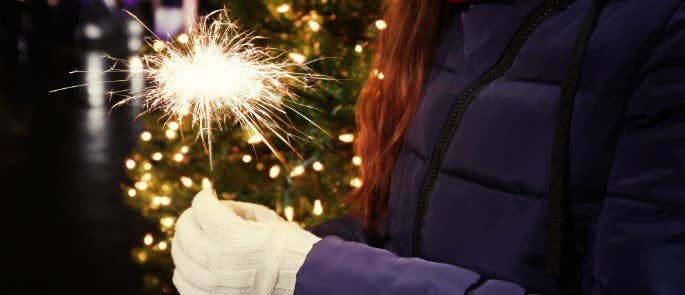
Alternatives to Bonfire and Fireworks for Bonfire Night
It’s worth mentioning that most local councils and fire and rescue services, such as the London Fire Brigade, strongly discourage setting off fireworks or having bonfires in private gardens. This is because they can be incredibly dangerous and a health and safety risk to those involved and nearby.
Instead of setting off fireworks or having a bonfire to celebrate the occasion, you may want to consider alternative events. For example, you could:
- Light some sparklers and use these in your garden. These should be lit one at a time, gloves must always be worn, and a bucket of water should be kept close by. If there are children present, they must be supervised when using the sparklers, and children under five should not be given them at all.
- Bake some traditional Bonfire Night treats such as toffee apples or parkin. This can be a fun and tasty activity for both children and adults alike. You could also make some mulled cider or apple juice. For some recipe inspiration, head to our Planning the Perfect Bonfire Night Party article.
- Gather inside and play some board games or other party activities. This is another activity that can bring your family together and make something of the evening. If you do have a fireplace, you could always light that to create an alternative kind of bonfire.
If you’re going to be setting off fireworks or having a bonfire, you must assess the risks involved and put the necessary health and safety precautions in place, including those that have been explained here. This will ensure that you can safely hold an event that is enjoyable for everyone and is memorable for the right reasons.


